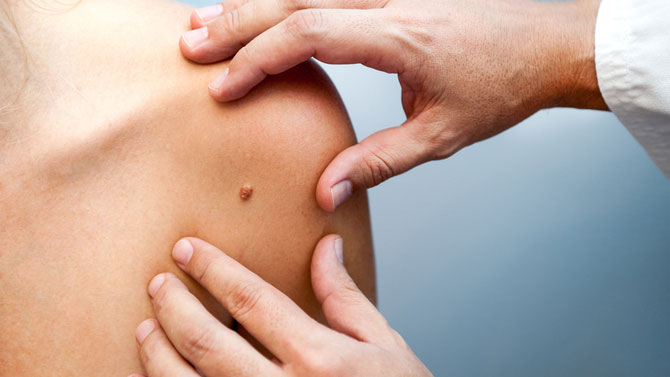How to Spot Skin Cancer

Here in Florida, and all across the globe, skin cancer a concern. As the most common cancer, the concern is well-founded. In the United States alone, there are more than 5.4 million cases of nonmelanoma skin cancer treated annually. Knowing what to look for when the skin cancer is small and hasn’t spread is the first step. Follow-up includes addressing these warning signs early, making treatment easier for you or your loved ones, and ultimately more successful in stopping the cancer from spreading. On the other hand, when it is allowed to progress, the result can be deadly.
Monthly Self-Checks
While your personal physician can check your skin during a check-up, most doctors recommend self-checks monthly to search for early warning signs of skin cancer. This simple head to toe exam can help you discover lesions that may be precancerous or cancerous. The good news is when found early and removed, these cancers are nearly always curable. After the first time, performing your self-exam will only take you around 10 minutes. If you note any areas of concern, see your doctor for a full examination.
The main types of skin cancer are basal cell carcinoma, squamous cell carcinoma, and the less common melanoma. Each type is different and presents in a variety of ways, making it important to know what to look for during your self-exam. Changes of any kind should not be ignored. Even when there is no pain, skin cancer is dangerous.
What to Look For – Generally
- A Mole, Beauty Mark, Birthmark, or random Brown Spot has changed color (brown black, patches of red, white, pink, or blue), had grown larger or thicker, has an irregular outline that is blurred, ragged, or notched (asymmetry), or has changed in texture. Any spot that is larger than ¼ inch or 6 mm (about the size of a number two pencil eraser).
- A growth on the skin that is translucent, multicolored, tan, black, or brown, and continues to grow.
- A sore or spot on the skin that itches, causes pain, crusts over, scabs, bleeds, and does not heal in three weeks.
What to Look For – Specifically
Basal Cell and Squamous Cell are the most common skin cancers and they aren’t as dangerous as melanoma.
Basal Cell Carcinomas are often found on the body in regions that get a great deal of sun exposure – like your face, head, and neck – though they can be found anywhere. They present as flat, often firm, pale, yellow areas that often look like a scar or pink growths raised on the edges, lower in the center, with blood vessels visible. They can also present as red, itchy patches or small bumps which look like shiny, translucent pink ‘pearls’ with darker (black, brown, or blue) areas. Basal cells can also appear as open sores that don’t heal completely.
Squamous cell carcinomas, like Basal cell carcinomas are most common on areas of the body which get a great deal of sun – your face, neck, ears, lips, and hands – but they too can also present anywhere on the body. Squamous cells often appear as rough, scaly red patches that bleed or crust, as raised bumps with a recessed center or as wart-like bumps. Like Basal cells they can also appear as open sores which do not heal.
Since all skin cancers appear uniquely, it is wise to point out any areas of concern spotted during your self-exam to your physician including: new spots, spots that look unusual, sores that don’t heal, redness, new swelling, itching, oozing, bleeding, or pain. Remember, the sooner you spot skin cancer, the more likely it can be cured.
